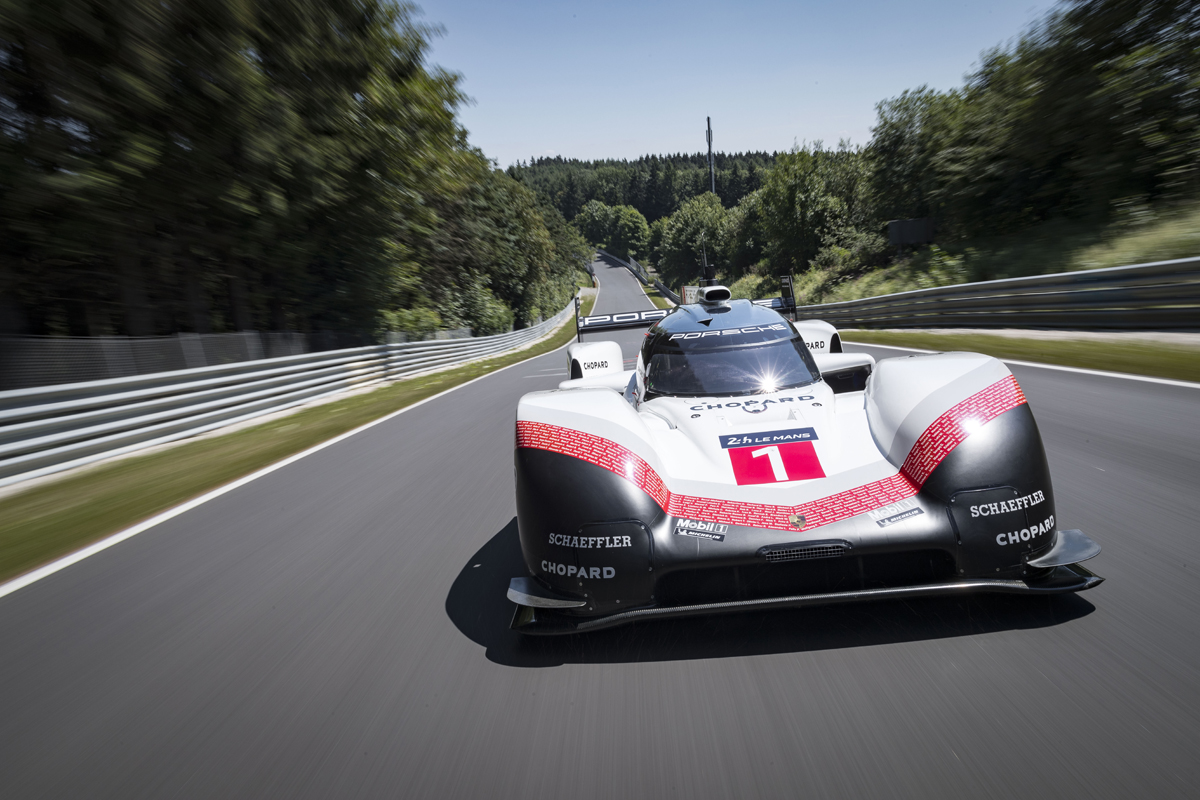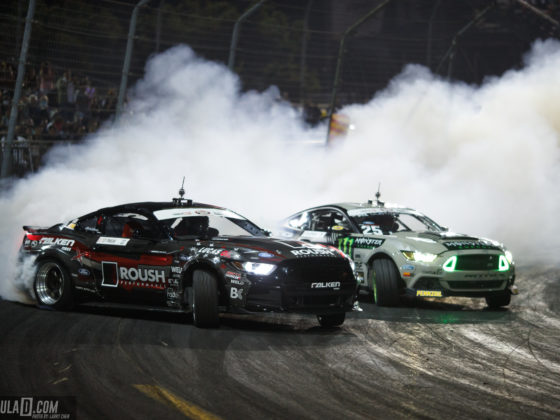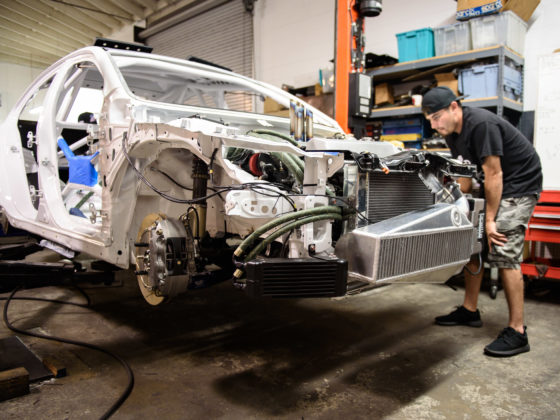
The graphs show engine torque, air mass flow rate, and turbocharger speed for the DualBoost and conventional turbocharger. Notice the dip in the curves for the DualBoost; remember that there were no calibration changes in going from the stock turbocharger to the DualBoost. My guess is the DualBoost spooled up more quickly than allowed in the stock calibration and a correction by the ECU was made to bring it back within the stock calibration targets. If the engine had been recalibrated for the DualBoost turbocharger, the gains in acceleration could have been greater.

The theory said that reduced inertia, improved compressor to turbine wheel matching, and better utilization of exhaust energy through improved turbine efficiency would improve transient response while still providing the same steady-state performance of a conventional turbocharger. Transient response is critical in a Motorsports application and Porsche has used the Garret DualBoost design to great effect, smashing track records around the world this year!
Be sure to check out this video on the DualBoost for Gasoline technology from Garrett:
And in case you missed the blistering lap the Garrett Dual Boost powered Porsche 919 Hybrid Evo clocked around the Nurburgring-Nordschleife, here it is in all its glory. Enjoy!
Sources
“The Next Generation of Gasoline Turbo Technology” original presentation




12 comments
I Googled, Garret dualboost turbos. I found info back to 2011-12 on forums. But if you go to Garrett website there is no Dual boost turbos for sale and we are in 2018.
Why has this technology still not been offered to the general public at least for aftermarket applications?
What’s interesting is this tech is, somewhat, already on the road. The Ford 6.7 diesel uses a turbo that has this technology on the compressor side, but is otherwise conventional with the turbine. It should be no surprise that the 6.7 turbo is from Garrett.
Are these turbos available from Honeywell or garrett?
What about the VNT turbos?
Tarik, in full disclosure, please know that I work for Honeywell Transportation Systems (TS).
Honeywell is the company; Transportation Systems is the business unit making Honeywell turbos for OEM factory applications; and.. for now… Garrett is our aftermarket brand.
I write “for now” because Honeywell announced plans in Oct 2017 to spin TS into a publicly traded, stand-alone company by the end of Q3 this year. We have subsequently announced the intention to return to our roots and rename the new company Garrett once that happens. https://turbo.honeywell.com/whats-new-in-turbo/press-release/honeywell-announces-garrett-as-company-name-for-transportation-systems-business-after-spin-off/
Thanks Mike, so you’re bringing Garrett and TS together?
How’s this affect the availability of these turbos for the aftermarket?
Thank you!
No effect on our available product portfolio in terms of what currently exists. Again, Garrett is not currently a company, it is a brand. Everything behind the scenes that is TS which supports Honeywell and Honeywell Garrett Aftermarket stays in place.
In addition to the marketing change when we move to rebranding everything Garrett after the spin, the company will enjoy independent governance and the ability to be more responsive and agile to meet industry needs. This is the point of the spin, to give the new Garrett the means to respond more quickly and with greater capability to launch desired innovations in both its OEM and Aftermarket turbo businesses, as well as our electric boosting products and automotive software operations.
Mike, sounds great!
1: You said electric boosting products as in plural, does this mean you have electrically assisted turbos besides your electric compressor? Or are you referring to the Electro hydraulic controlled VNT turbos?
2: It’ll be great to see what Garrett is able to do with loosening the leash.
3: Are VNT gasoline turbos currently available for purchase? If so are they available in the 28/35/40 sizes??
I asked motoiq about this tech several years ago. Surprised it’s taken so long for people to talk about it. kinda hate how this tech is kept secret for so long.
When can I buy one?
Mitsubishi was using TiAl turbine wheels in Lancer Evolution RS models from the EVO6 (which came out in 1999) right up to EVOX.
I’m pretty sure the MHI turbo with TiAl turbine wheel was ONLY used on the Evo 6.5 Tommi Makinen Edition (TME) and it was prone to breaking off. In 2012, Porsche had to put a stop order on the Panamera Turbo because the MHI turbos had their TiAl turbine wheels breaking off again.
Tarik, it appears we’ve exhausted the “reply” function. Shoot me a note at michael.stoller@honeywell.com.